Terrorism is the use or threat of violence to create fear. Terrorism is usually committed to promote a movement or cause. Terrorist acts have included setting off bombs, murdering and kidnapping people, hijacking (seizing control of) airplanes, attacking people in public gathering places, and using vehicles to run down pedestrians. Terrorists are motivated by ideology (the basic beliefs or ideas of a group). That ideology can be political, religious, or social. Terrorists hope to achieve their goals through violence that promotes fear. Many terrorists represent revolutionary movements seeking a change in government. Some terrorists hope to attract attention and gain support for particular causes. Others have unclear goals or simply oppose all forms of authority.

Terrorism is usually the work of organized networks or groups. Many groups operate within a single nation or region. Others have networks and small groups called cells in many countries. However, sometimes individuals who do not belong to a terrorist group carry out attacks. They share the ideological beliefs of the group and act on its behalf without being formally instructed to do so. These “lone wolves” are hard to detect because they do not communicate with the terrorist organization and so do not come to the attention of law enforcement or intelligence (information-gathering) agencies.
In addition to the death and destruction caused by the attacks themselves, terrorists seek to create panic and fear throughout the general population. They may try to cripple an economy by destroying bridges, dams, telephone networks, or other essential structures or services. Terrorists hope that people who observe the attacks will lose their sense of security and their confidence in the existing government or political system.
All terrorist acts are crimes under national and international law. Many countries fight terrorism by increasing security around likely targets and by gathering intelligence. Intelligence gathering enables countries to kill or apprehend terrorists before they strike. By working together with international organizations and with other nations facing terrorist threats, countries share information and learn more about terrorist organizations. Some countries train special military and law enforcement units to confront terrorist situations. Efforts to prevent terrorism are called counterterrorism.
Characteristics of terrorism
Terrorist groups generally attack countries, groups, and individuals who oppose them. They create mass casualties to spread fear, and they kill men, women, and children at random. Common victims of kidnappings and assassinations include business executives, diplomats, judges, police, and political leaders. Some terrorists attack churches, mosques, synagogues, and other places of worship. Others target airplanes, buses, trains, and nightclubs. Terrorists often choose targets certain to attract coverage from newspapers, television, and other media. Such targets include government buildings, national monuments and landmarks, and skyscrapers.
Terrorist recruits.
Terrorist groups recruit members to run the organization and carry out attacks. Counterterrorism experts struggle to identify those vulnerable to recruitment and to understand how recruitment occurs. In the past, those recruited to carry out attacks tended to be poorly educated, economically disadvantaged young men. Terrorist leaders tended to be older and better educated. Since the rise of the radical Islamic militant group the Islamic State in 2014, more recruits have been older and better educated. Fewer recruits have been poor. Men still make up the majority of recruits, but an increasing number of women have joined terrorist groups and carried out attacks.
Social media and radicalization.
Radicalization is the process by which people are persuaded to believe terrorist ideology and to act on behalf of a terrorist group. Traditionally, radicalization occurred through direct human contact. Friends, family members, religious leaders, and others persuaded followers to support a cause. Although personal relationships still matter, the development of the internet and social media has allowed terrorist groups to radicalize people from a distance, through chat rooms; such social networking sites as Facebook; and such communication tools as FaceTime and Skype.
Terrorist methods.
Terrorists seek to create instability and alarm through a number of methods. Traditional methods include bombings, assassinations, kidnappings, and hijackings. Newer threats include computer-based terrorism and weapons of mass destruction (WMD). WMD have the potential to kill huge numbers of people. They include biological weapons, such as deadly viruses; chemical weapons, such as poisonous gases; and nuclear weapons.
Bombings
make up a large percentage of terrorist acts. Bombs may be placed in automobiles, backpacks, garbage cans, suitcases, or elsewhere. Many bombings involve cars or trucks packed with explosives and parked next to a building or other target. Terrorists may try to smuggle bombs onto airplanes or into crowded sports arenas or concert halls. Some bombs are quite sophisticated; others are simpler homemade devices. In the United States, the terrorists who attacked the Boston Marathon in Boston, Massachusetts, in 2013 used pressure cookers packed with explosives as bombs.
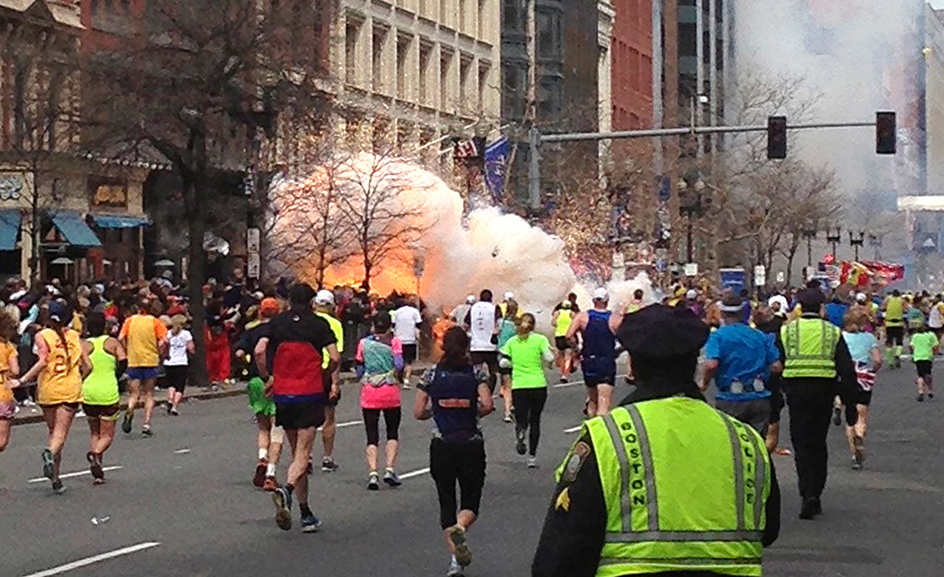
A bomber may strap explosives to his or her body or hide explosives under clothing, in a backpack, or in a hand-carried item such as a briefcase. The terrorist detonates the explosives in a crowded area, among specific individuals, or at the location of a specific target. Such attacks are commonly called suicide bombings, because the terrorist takes his or her own life while carrying out the attack. Suicide bombings are meant to inflict many casualties or a great amount of damage, physically and psychologically. Suicide bombers are usually martyrs for a religious or political cause. A martyr is a person willing to die or suffer for a belief. Male suicide bombers are usually motivated by ideological conviction. Female suicide bombers are often motivated by a combination of ideology and personal loss. In the republic of Chechnya, for example, which has been struggling for independence from Russia since the early 1990’s, women called “black widows” volunteer for suicide missions after losing husbands or other close relatives during the conflict. Families of suicide bombers sometimes receive regular cash and other benefits from the group or country supporting the bomber.
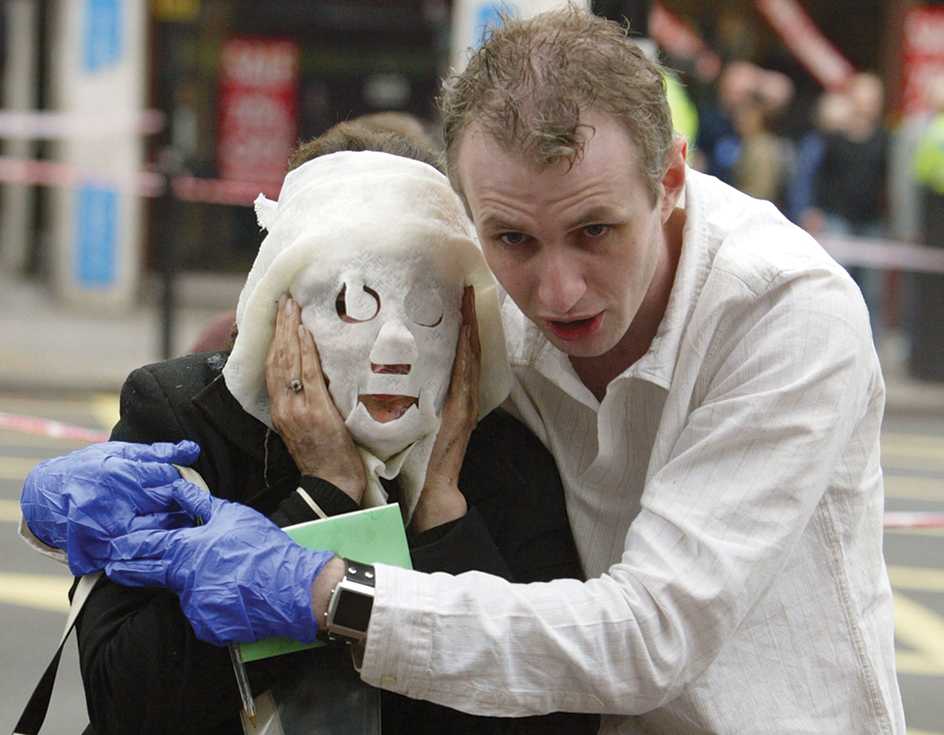
Assassinations and kidnappings.
Terrorists may assassinate government officials or other important individuals. Terrorists may also kidnap individuals and hold them hostage until certain demands are met. In some cases, terrorists target foreign travelers in an attempt to discourage other people from visiting a particular country. They may also hold hostages for ransom to finance terrorist activities. In 2004, Chechen terrorists took an entire school of more than 1,000 students and teachers hostage in Beslan, a city in southern Russia.
Hijackings.
Some terrorists hijack airplanes, buses, or other vehicles. They typically use weapons or bomb threats to gain control. They may take passengers as hostages and threaten to kill the passengers if their demands are not met. In some cases, hijackers may intentionally crash a plane into a target. Such hijackings are especially dangerous because planes loaded with fuel can become “flying bombs” capable of causing great destruction.
Hybrid attacks
involve the use of a variety of tools. In 2008, for example, Lashkar-e-Taiba terrorists, members of an Islamic militant group based in Pakistan, struck multiple targets in Mumbai, India, using bombs and guns. They attacked the city’s main railway station, two hotels, a Jewish center, and a hospital, killing more than 170 people and injuring hundreds of others. In 2015, Islamic State terrorists killed 130 people and injured more than 350 others using bombs and small firearms in simultaneous attacks on multiple sites in Paris, France. In Dhaka, Bangladesh, ISIS terrorists armed with guns, swords, and homemade bombs killed 20 hostages and 2 Bangladeshi police officers in a 2016 attack on a cafe popular with foreigners.
Vehicle attacks.
As governments improved at securing buildings and airports and made explosives harder to get, terrorists adapted. In 2016, Islamic State terrorists and supporters began carrying out attacks using vehicles. One such terrorist drove a truck through crowds celebrating Bastille Day in Nice, France, killing 86 people and injuring over 400 others. Another ISIS-inspired terrorist used a truck to kill 12 people and injure 56 others at a Christmas Market in Berlin, Germany, that year. Similarly, a British-born Islamist terrorist drove a vehicle into pedestrians on a bridge outside the Parliament building in London, England, in early 2017, killing two people, before fatally stabbing a police officer. 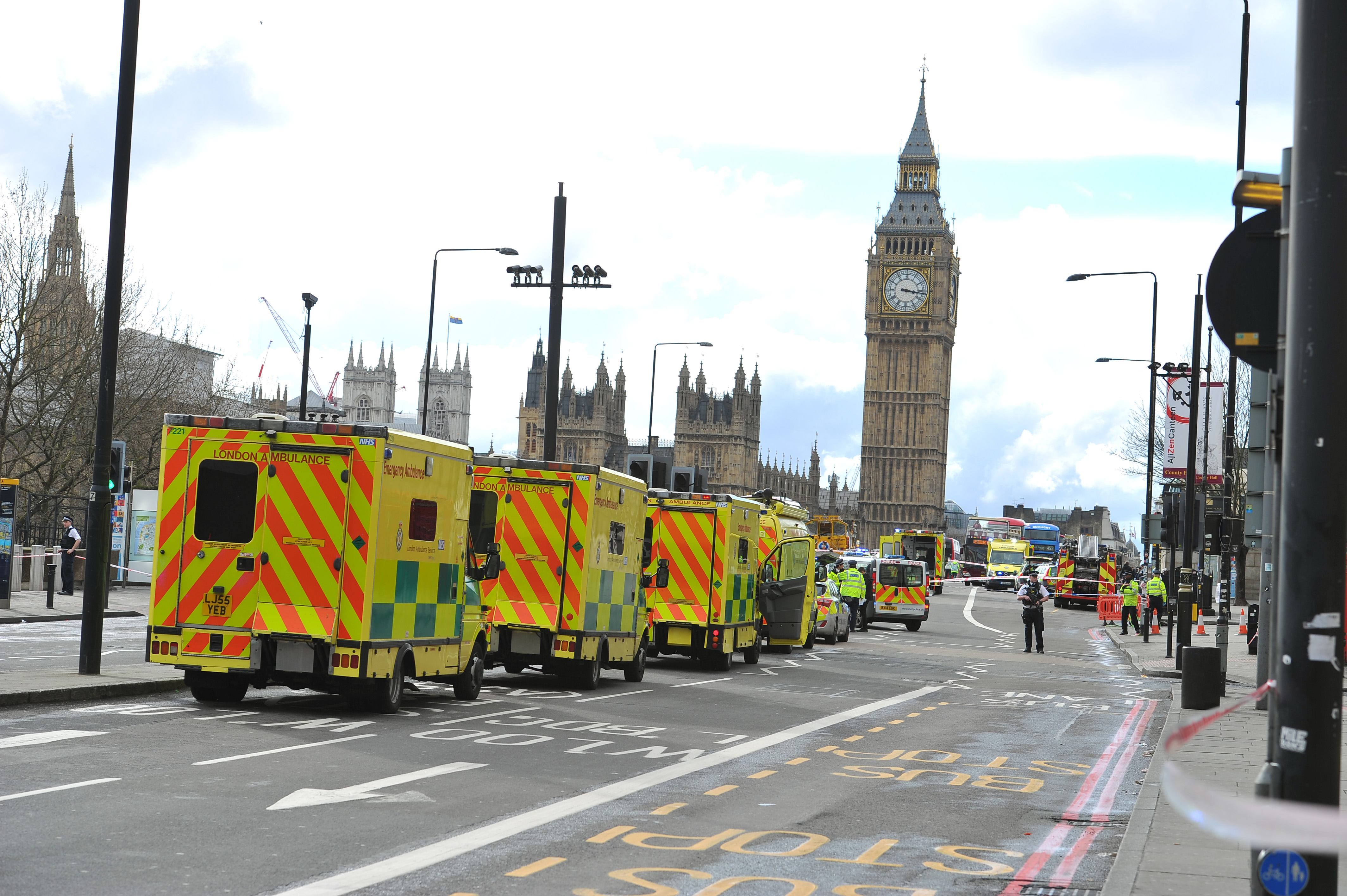
Biological attacks
involve the spreading of harmful bacteria, viruses, and biological toxins (poisons). The use of biological agents (substances) to cause harm is sometimes called germ warfare or bioterrorism. Bioterrorists may seek to contaminate (infect) food or water supplies. They may distribute such toxins as ricin. Or they may spread dangerous diseases, such as anthrax or smallpox. They may, for example, send contaminated items through the mail. However, many biological weapons are difficult for terrorists to prepare and use effectively. 
Chemical attacks
involve the intentional release of toxic chemicals. Some chemical agents, such as sarin (SAR ihn) gas, affect the nervous system and can cause paralysis or death. In 1995, members of the Japanese religious cult Aum Shinrikyo released sarin gas in the subway system in Tokyo, Japan, killing 12 people and injuring thousands more. Other chemical agents can burn or damage the skin, eyes, nose, throat, or lungs. Mustard gas, for example, causes burns and blindness. Terrorists may buy, steal, or manufacture chemical weapons and then release them in crowded areas. But many chemical weapons are difficult for terrorists to prepare and use. 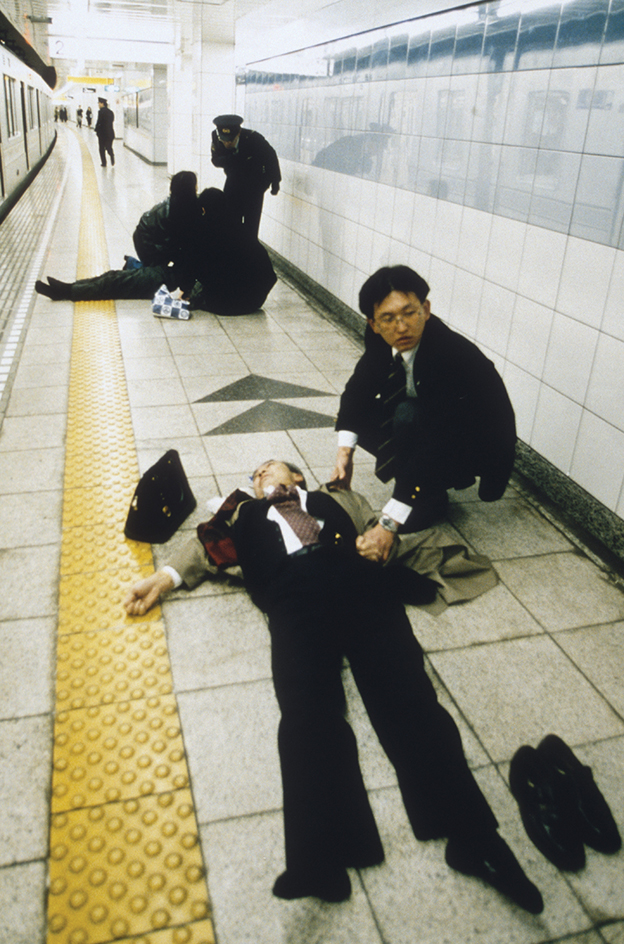
Nuclear and radiological attacks.
Governments have long sought to keep nuclear and radiological materials out of the hands of terrorist organizations. Although there has never been a nuclear or radiological terrorist attack, counterterrorism experts have studied how terrorists might use such materials to conduct attacks.
Terrorist groups might seek to acquire nuclear devices from an illegal weapons supplier or a government that has such devices. Alternatively, they might try to obtain radioactive materials, such as weapons-grade plutonium or uranium, and manufacture their own weapons. If terrorists are unable to acquire or build nuclear weapons, they might try to cause explosions at existing nuclear facilities. Terrorists might also bundle radioactive materials with conventional (nonnuclear) explosives to create radiological dispersion devices. Such devices, sometimes called “dirty bombs,” produce invisible radiation that could cause sickness or death. The radioactive material left by such an attack could keep people out of a vital area, such as a downtown business district, for months or even years.
Computer-based terrorism,
also called cyberterrorism, involves the sabotage of computer information systems. Cyberterrorists may design and circulate computer viruses. Such viruses can disrupt computer operations and destroy data. Cyberterrorists may also seek to steal or alter secret or valuable information. Or they may attack systems that provide important services. By early 2017, cyber attacks had been carried out only by countries and criminals, but security experts take the threat of terrorists using them seriously.
Other forms of terrorism.
Terrorists may use any other form of violence or threats of violence to create fear and alarm. Some governments use such methods as torture and murder to frighten their opposition and increase their power. The use of such methods by oppressive (harsh and unjust) governments is called state terrorism or state-conducted terrorism. War crimes, genocide (extermination of an entire people), and other international violations may also be considered acts of terror.
Terrorist organizations and networks.
Most terrorists are associated with specific movements or organized groups. Terrorist organizations vary in size and structure. Most groups are small and focus on activities within their own nation or region. Others have international networks that carry out attacks worldwide. One of the largest global terror groups is al-Qa`ida (Arabic for “the base”). It seeks to promote the goals of Islamic extremists (people favoring extreme change).
Most terrorist organizations have a leader or group of leaders who develop strategies and direct operations. Active terrorists within the organization then carry out the plans. Many terrorist groups consist of cells, which may receive specific instructions from leaders. But cells sometimes plan their own activities based on the organization’s central goals. Terrorist groups make great efforts to hide their members’ identities, cell locations, and communication channels. Typically, only one member of each cell knows how to contact the larger organization. As a result, the larger group may remain safe even if a cell is discovered and destroyed. The secrecy and complexity of the cell structure make it difficult for governments to gather information about terrorist groups.
Sources of funding for terrorist groups are usually carefully concealed. In the past, some governments have secretly supported or even sponsored terrorist groups by providing weapons, training, and money. Many terrorist groups raise money through such criminal activities as theft or the sale of illegal drugs. In some cases, a group posing as a social service organization may direct donations toward terrorist causes without the donors’ knowledge.
Lone wolves.
Individuals who carry out attacks in the interests of a cause have been called “lone wolves” to distinguish them from those operating under the direction of a terrorist organization. Traditional lone wolves often develop their own philosophy to justify their actions. The American Theodore J. Kaczynski, otherwise known as the Unabomber, killed 3 people and injured 23 others in a bombing campaign from 1978 to 1995. Kaczynski wished to publicize his anti-technology manifesto (public declaration).
In 1995, Americans Timothy J. McVeigh and Terry L. Nichols detonated a bomb at the Murrah Federal Building in Oklahoma City, Oklahoma, killing 168 people. McVeigh and Nichols claimed that actions of the U.S. government had deprived citizens of their freedom.

Since 2008, the number of domestic hate groups in the United States has increased. The ideology of these groups has inspired some people to act violently as lone wolves. In 2012, American Wade Michael Page killed six people at a Sikh temple in Oak Creek, Wisconsin, a suburb of Milwaukee. Page was a white supremacist (a person who believes white people to be better than people of other races). In 2015, 22-year-old white supremacist Dylan Roof shot and killed nine people at an African American church in Charleston, South Carolina. Roof became the first person in the United States to receive the death penalty for a federal hate-crime conviction.
Since the rise of the Islamic State, the nature of lone-wolf terrorism has changed, and lone-wolf attacks have become more common. Individuals sympathetic to a terrorist cause can be radicalized online and carry out attacks on behalf of a group like the Islamic State. The Islamic State often recognizes such lone wolves as martyrs for its cause. Lone wolf terrorists killed several soldiers in attacks in London, England, and in Quebec and Ottawa in Canada in the early 2010’s. In the United States in 2016, Afghan American Omar Mateen killed 49 people and wounded 53 others with an assault rifle at a gay nightclub in Orlando, Florida. The Islamic State praised his actions.
Fighting terrorism
Counterterrorism efforts involve numerous activities. Governments gather and evaluate information about suspected terrorists and terrorist groups. They identify potential terrorist threats. They develop a wide variety of security measures and emergency procedures. Many governments refuse to negotiate with terrorists or with nations that support terrorists. National security and intelligence services play an important role in counterterrorism. Such services include the U.S. Department of Homeland Security, the U.S. Central Intelligence Agency (CIA), the United Kingdom’s Security Service (MI5) and Secret Intelligence Service (MI6), and Israel’s Mossad. International organizations, such as the United Nations (UN) and Interpol (International Criminal Police Organization), help nations work together to prevent terrorism.
Intelligence efforts.
National governments, international organizations, police departments, and specialized intelligence services collect, share, and analyze information relating to terrorism. Such efforts can help prevent attacks by identifying terrorist suspects and by detecting terrorist plots while they are being planned.
Many intelligence and law enforcement agencies use electronic surveillance to monitor (check) suspected terrorists and to intercept their communication. Wiretapping is the interception of telephone conversations by a listening device connected to a telephone wire or placed nearby. There are also ways of monitoring conversations held on a cell phone. Other forms of surveillance include special aircraft. Artificial satellites can produce detailed images of suspected terrorist bases or camps.
Governments may work with agents from foreign countries. They may send undercover agents to obtain information from within a terrorist group. Governments may also question detained terrorists and search areas where terrorists have lived or gathered. In some cases, governments can examine financial records and trace the funding of terrorist organizations. They may order banks to freeze (deny access to) the assets (money and property) of terrorists or of individuals or groups believed to be contributing to terrorist activity.
Security measures.
Most governments work to protect, or “harden,” potential terrorist targets. Such targets include airports and airplanes, large public gatherings, and government buildings. Target-hardening efforts typically involve careful security systems and procedures and the work of trained security personnel.
Thorough security at airports and on airplanes can decrease the likelihood of hijackings and other attacks. People who travel on airplanes must pass through multiple airport checkpoints. Guards scan or search baggage and other items. They may also frisk (search) passengers. Security measures on the airplane itself may include reinforced cockpit doors and armed air marshals. 
Many structures, especially skyscrapers and government buildings, have physical barriers to keep car or truck bombs at a distance. Many buildings also have metal detectors or other security checkpoints to search for dangerous items and prevent unauthorized people from entering. Police may guard bridges, tunnels, or monuments. At some crowded events, cameras scan people’s faces. A computer then tries to match the images with photos of terrorist suspects in a database.
The protection of key sites is an essential part of counterterrorism. However, in many cases, target hardening may lead to target displacement. This means that terrorists shift their plans to different sites that are not as well protected. No system of protection can fully safeguard every building, bridge, and tunnel. A site with little protection is sometimes called a “soft” target.
As governments have hardened high-profile targets, terrorists have shifted their focus to softer ones. Since the 2008 Mumbai attacks, terrorists have increasingly targeted such public events as concerts, sporting events, outdoor markets, and restaurants. Such targets are far too numerous to protect. Countries have responded by asking citizens to be aware of their surroundings, advising that “if you see something, say something.”
The risk of cyberterrorism can be reduced by computer security measures. Such measures include antivirus programs and electronic barriers called firewalls.
Diplomatic, economic, and military pressure.
Because of the global reach of terrorist activity, the cooperation of organizations and governments from various countries is essential. The UN and other international bodies help promote this cooperation. Numerous treaties and international agreements have sought to address terrorist activity. For example, extradition treaties allow people to be arrested in one country and sent for trial to a different country in which an attack took place. Extradition treaties make it difficult for terrorists to escape criminal charges.
The international community may isolate or punish nations that support terrorism. Governments may impose economic sanctions on nations that support terrorism. In other words, they may limit or end economic relations with the country until it changes its policies. If sanctions and diplomatic pressure fail, countries may launch military strikes against terrorist bases and camps or against countries that sponsor terrorism.
Counterterrorism, human rights, and civil liberties.
Governments rely heavily on electronic surveillance and eavesdropping to combat terrorism. They may also give police extraordinary powers to search and detain suspects, sometimes for extended periods without trial. Some countries have also used “enhanced interrogation techniques,” practises that human rights groups regard as torture. Most governments and international organizations regard torture as a violation of human rights.
There is less agreement on civil liberties. Some societies use fingerprints as a routine form of identification, but others consider fingerprinting a procedure reserved for criminals. The British people accept widespread use of closed circuit television in public places as a necessary security measure. Americans regard such surveillance as a serious invasion of privacy. Counterterrorism requires balancing the need for security with individual civil liberties.
History of terrorism
The beginnings of terrorist violence closely followed the spread of early civilization. From ancient times to the present, individuals, rebel groups, and governments have used cruelty and force. They used those tactics to eliminate enemies, to spread fear and panic, and to achieve political, religious, and other goals.
Early terrorism.
The empire builders of ancient times often maintained control over conquered peoples through brutality and fear. In 71 B.C., for instance, the Roman general Crassus crushed a revolt led by the gladiator Spartacus. Crassus then crucified the captured rebels to warn others of the consequences of revolt. Some rebel groups used terrorist methods to resist their rulers. For instance, a Jewish group called the Sicarii (suh KAHR ee eye) waged violent campaigns against the Romans from about A.D. 6 to 73.
Starting in the 800’s, Japanese ninja, members of a secret organization of peasant families, spread terror through assassination, kidnapping, and sabotage. Ninja were masters at various forms of armed and unarmed combat, including the use of disguises and poisons. In the 1100’s, a secret society called assassins or hashshashin (hemp-eaters) carried out violent campaigns in Persia (now Iran) and Asia Minor (now part of Turkey). They smoked a drug called hashish, made from the hemp plant, and killed their enemies while under its influence. In the 1300’s and 1400’s, peasant uprisings in Europe produced widespread violence. Much of it would now be considered terrorist in nature.
Modern terrorism
began with the French Revolution (1789-1799). The word terrorism first came into use at that time. Some of the revolutionaries who seized power adopted a policy of violence against people they considered enemies of the revolution. The revolutionary government executed thousands of people. Because of the number of executions and the fear that they produced, this period of rule became known as the Reign of Terror. By the early 1800’s, terrorism had become a fixture of rebellion and conflict throughout the world. 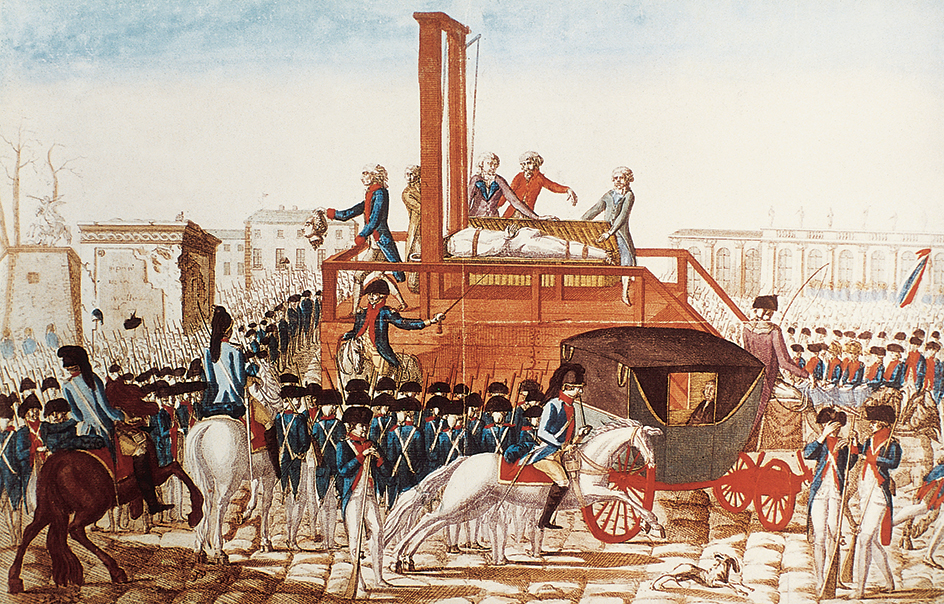
Analysts divide terrorism into categories based upon the groups that employ terrorist tactics. These include nations, insurgent groups, domestic terrorists, international terrorists, and criminal organizations.
State terrorism.
In the 1930’s, the dictators Adolf Hitler of Germany, Benito Mussolini of Italy, and Joseph Stalin of the Soviet Union used terrorist tactics to discourage political opposition. From 1976 to 1983, military leaders controlled Argentina’s government, which was called el Proceso (the Process). Under this government, an estimated 30,000 people were imprisoned, tortured, and executed without trials. El Proceso’s campaign against its enemies became known as the “dirty war.” Many authoritarian governments continue to use state terrorism today to frighten and control the population. Authoritarian governments demand unquestioning obedience.
Insurgent terrorism.
Revolutionary movements known as insurgencies seek to overthrow existing governments. Such movements use terrorist tactics to force people to support them and to weaken the country. Because insurgents seek popular support, they usually employ terror selectively. They may murder police, government officials, and members of the military, but they avoid large-scale attacks against ordinary civilians. The Irish Republican Army (IRA) fought to unify Northern Ireland with the Republic of Ireland until 1998, when peace was negotiated. The Basque separatist group Euskadi ta Askatasuna (ETA; Basque Homeland and Freedom) carried out attacks against the Spanish government from the 1960’s through the early 2000’s. Both the IRA and ETA used terror tactics against government officials, security forces, and members of the community accused of working with the authorities.
Domestic terrorism.
Analysts designate groups operating within a single country as domestic terrorists. Such groups do not seek to overthrow the government or carry out attacks overseas, but they are ideologically motivated to use terror on behalf of their cause. They support and often use violence against certain groups.
The Ku Klux Klan, created in the United States after the American Civil War (1861-1865), used terrorism against African Americans to enforce rigid segregation (the separation of groups of people). The number of such hate groups increased significantly in the United States in the early 2000’s. White supremacist and certain Christian identity groups seek to restore the country to the type of Christian republic they believe it once was. 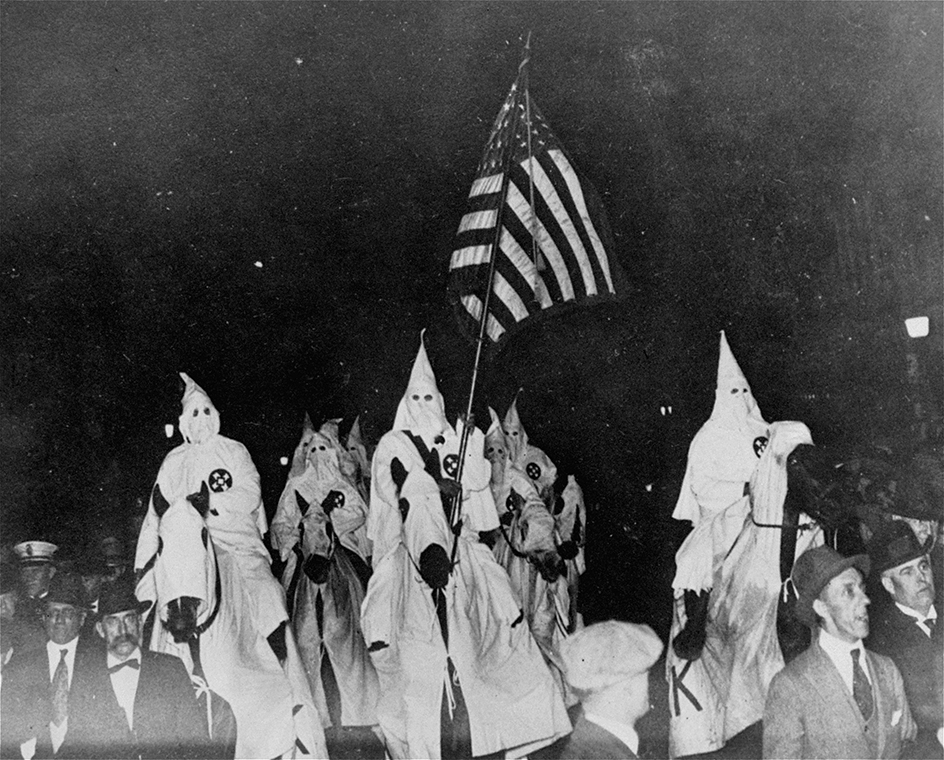
Other groups in the United States calling themselves “sovereign citizens” and “patriot militias” oppose what they see as unjust exercise of government authority. Some of their members have killed law enforcement officers. Environmental extremists damage property to prevent or protest projects they believe endanger the environment. Most domestic extremist groups have not engaged in open acts of terror, but their ideology and emphasis on paramilitary training make them a potentially serious threat. Paramilitaries are organized fighters who are not part of a country’s regular military forces.
In the 1960’s and 1970’s, several terrorist groups in Europe sought to destroy the political and economic systems in their home countries. The Red Brigades in Italy and the Red Army Faction (also called the Baader-Meinhof Gang) in West Germany carried out attacks based on a leftist ideology called Marxism. In the 1980’s in Peru, the leftist group Shining Path began attacks against the government and imposed a reign of terror on areas under its control. In 2011 in Norway, Anders Breivik, a Norwegian with right-wing and anti-Muslim beliefs, set off a bomb outside the prime minister’s office and later killed more than 75 people, mostly teenagers, at a youth camp where the prime minister was due to speak.
Some domestic terrorists, such as the Aum Shinrikyo cult in Japan, have had religious rather than political motives. In the United States and other countries, extremists opposed to abortion have bombed and burned down clinics. They have also murdered doctors who performed abortions. People who strongly oppose abortion generally do so because of religious beliefs.
International terrorism.
In the late 1900’s, many terrorist groups began forming networks and operating globally. Some of these groups, particularly in the Middle East, held a deep hatred for the United States and Western countries in general. Concerns that terrorists might obtain weapons of mass destruction increased dramatically.
In 1998, terrorists bombed U.S. embassies in Kenya and Tanzania. American officials linked the bombings to Osama bin Laden, a Saudi-born millionaire and Islamic extremist. Bin Laden’s group, al-Qa`ida, has carried out other attacks. For example, it bombed the U.S. Navy warship Cole in Yemen in 2000 and carried out the Sept. 11, 2001, terrorist attacks in the United States. Al-Qa`ida sought to replace what the group considered to be apostate regimes (governments that have abandoned Islam) in Muslim-majority countries with truly Islamic governments. The group attacked Western countries, especially the United States, for supporting those regimes. By 2001, al-Qa`ida was believed to have affiliates or cells in more than 60 countries. 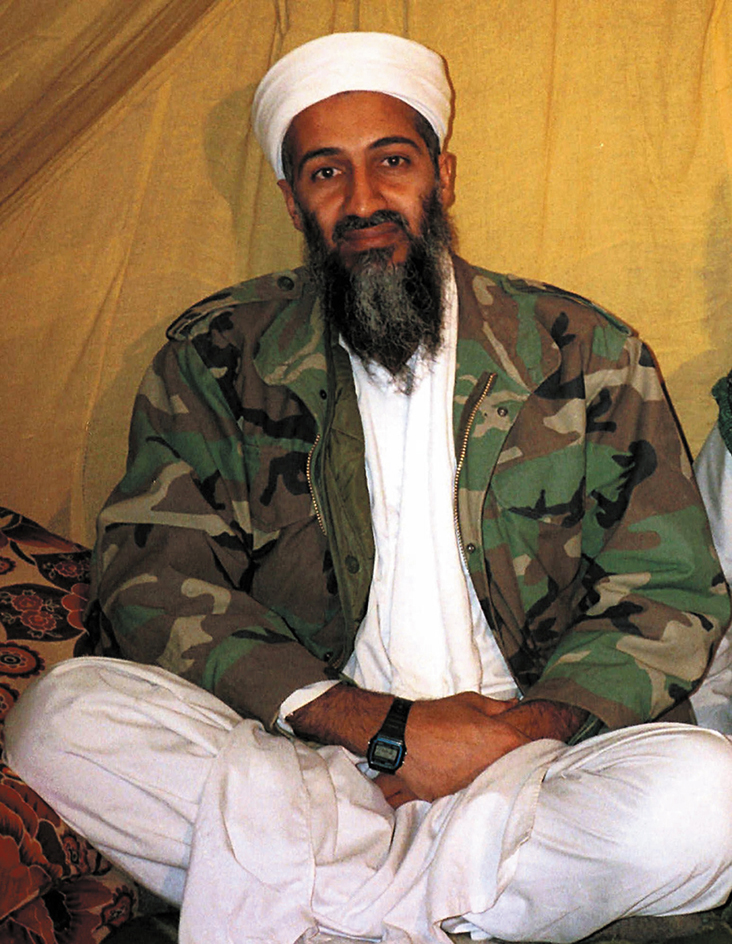
September 11 and the “war on terror.”
On Sept. 11, 2001, about 3,000 people died as a result of the worst terrorist attack in U.S. history. Al-Qa`ida hijackers seized two commercial airplanes and crashed them into the twin towers of the World Trade Center in New York City. Another hijacked plane crashed into the Pentagon Building just outside Washington, D.C. A fourth hijacked airplane crashed into a rural area in Somerset County, Pennsylvania.
In response to the attacks—commonly known as 9/11—U.S. President George W. Bush called for a global “war on terror.” The war on terror included conventional and nontraditional military campaigns, efforts to disrupt the communications and funding of terrorist groups, and new laws and government reforms. Some antiterror efforts caused controversy over such issues as balancing security with individuals’ rights, and the treatment of terror suspects, including interrogation practics.
The September 11 attacks and the war on terror led to the Afghanistan War, which began in 2001, and the Iraq War (2003-2011). The Afghanistan War began when a U.S.-led coalition invaded Afghanistan. At the time, the country was controlled by the Taliban, a militant Islamic group that had protected Osama bin Laden and al-Qa`ida. The campaign drove the Taliban from power late in 2001. The Iraq War began when the United States and its allies launched an invasion of Iraq. The Bush administration claimed that Iraq’s government supported terrorists and potentially could supply them with weapons of mass destruction. In the following years in Iraq, many terrorist attacks targeted U.S.-led forces and killed coalition troops.
Legal measures and government reforms.
Since the September 11 attacks, counterterrorism has become a top priority for governments throughout the world. Some countries have passed new laws or enacted government reforms to combat terrorist activity. For example, in the United States in 2001, Congress passed the USA Patriot Act. The act granted government authorities greater power to conduct searches, use wiretaps, and detain and question suspects. Other nations, including India and the United Kingdom, introduced similar measures.
In 2002, the U.S. Congress established the Department of Homeland Security, an executive department devoted to fighting terrorism. In 2004, Congress passed the Intelligence Reform and Terrorism Prevention Act. The act reorganized the government’s intelligence community. It also introduced additional measures to detect, investigate, and prevent terrorist activity. The Military Commissions Act of 2006 set forth procedures for trying terrorist suspects in U.S. military courts. The law also provided legal protection to U.S. military and intelligence officials who interrogate terrorist detainees.
Affiliates of al-Qa`ida.
Since the fall of the Taliban in 2001, U.S. and allied forces have continued to search for al-Qa`ida leaders in Afghanistan, Iraq, and other countries. Many of the leaders, including Osama bin Laden, have been captured or killed. However, other groups associated with al-Qa`ida have increased in importance. Several groups in the Middle East, Africa, and Asia declared their affiliation with al-Qa`ida. Such groups that have posed a serious threat in their countries of origin and neighboring countries include al-Shabab (Arabic for the Youth) in Somalia; Jemaah Islamiyah (Arabic for Islamic Community) in Indonesia; Boko Haram (Hausa for Western education is forbidden) in Nigeria; and al-Qa`ida in the Arabian Peninsula, based in Yemen.
The Islamic State,
a radical, militant Islamic group, developed in the early 2000’s. Other names for the group have included Islamic State in Iraq and Syria (ISIS) and Islamic State in Iraq and the Levant (ISIL). The Islamic State grew from an al-Qa`ida affiliate operating in Iraq after the U.S. invasion of that country. It controls an international network of cells and followers. The group became internationally prominent after capturing Mosul, one of Iraq’s largest cities, in 2014. It took advantage of the Syrian civil war, which began in 2011, to seize territory in Syria as well. Following the same ideology as al-Qa`ida, the Islamic State operates according to a severe interpretation of Sharī`a, the legal and moral code of Islam.
Islamic State militants have killed thousands of people, including civilians, journalists, military personnel, and rival militants. The group has beheaded captives and raped and murdered members of enemy groups, including Christians, Shī`ite Muslims, and Yazidis (Kurdish-speaking people of the Middle East). The Islamic State has targeted countries in Africa, Asia, Europe, the Middle East, and North America. Using social media, it has recruited followers from around the world.
Recent developments.
International terrorism increased significantly after the Islamic State gained territory in Iraq and Syria. Terrorist attacks by the Islamic State and affiliates of al-Qa`ida continued into the 2020’s. They occurred throughout the world, including in Africa, Asia, Europe, and the Middle East. Among their victims were aid workers, airline passengers, journalists, and many ordinary people going about their lives. Lone wolves inspired by Islamist groups also carried out terrorist attacks, including bombings, shootings, and attacks with vehicles. In addition, the Taliban remained active in Afghanistan. 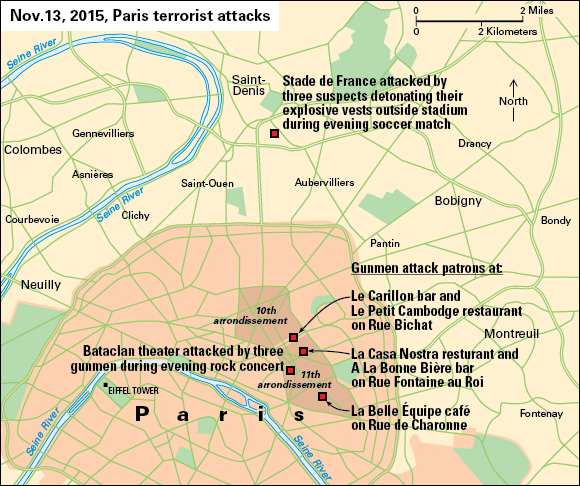
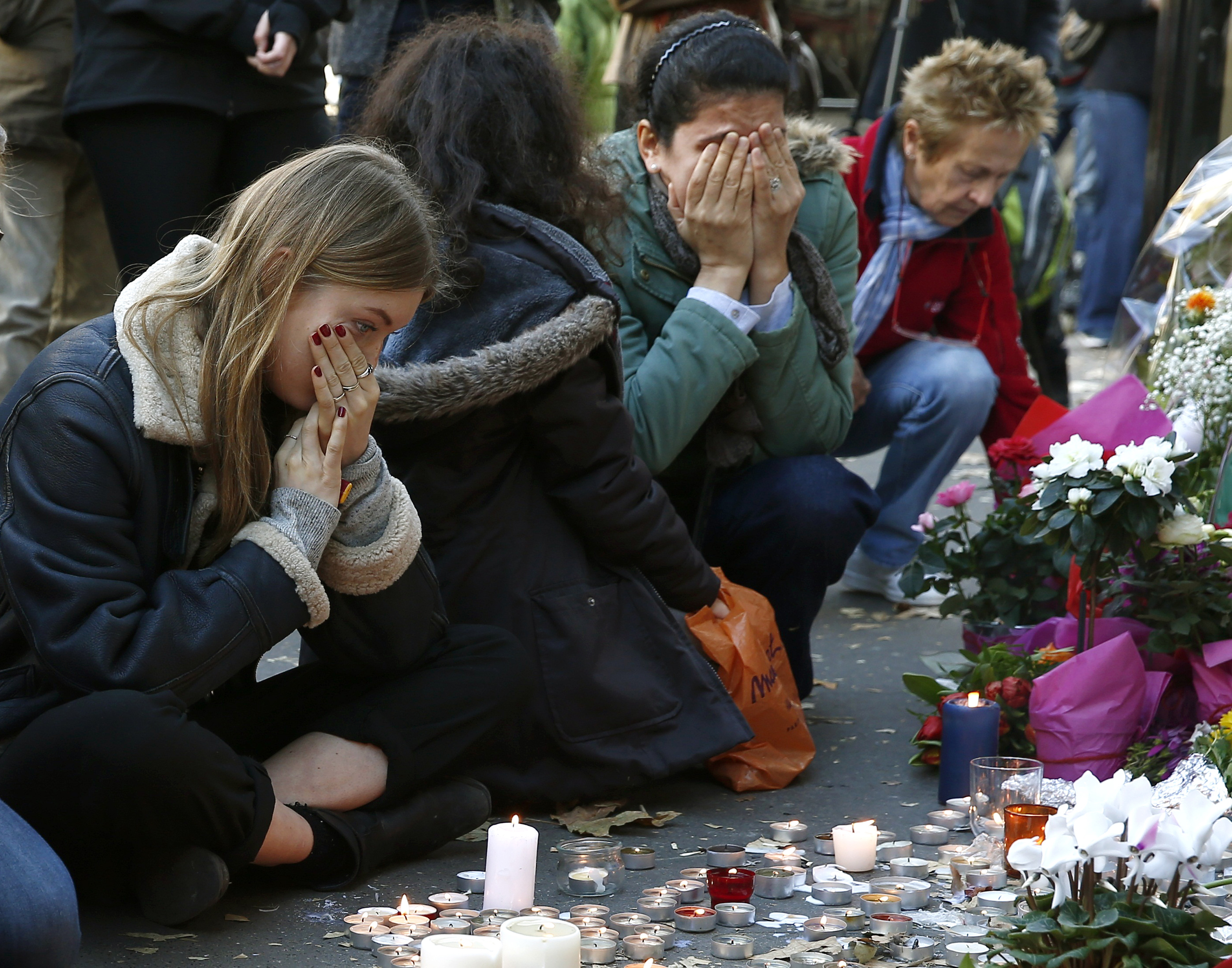
The United States experienced an increase in domestic terrorism, especially by far-right conservatives, beginning in the 2010’s. Domestic terrorists included those with political, racial or ethnic, and religious motives, for example antigovernment extremists and white supremacists. In one notable incident, supporters of Republican President Donald Trump violently attacked the U.S. Capitol on Jan. 6, 2021. At the time, Congress was working to certify the results of a presidential election Trump had lost. There also have been attacks by far-left terrorists, including attacks against police and efforts to hinder oil pipeline construction.
